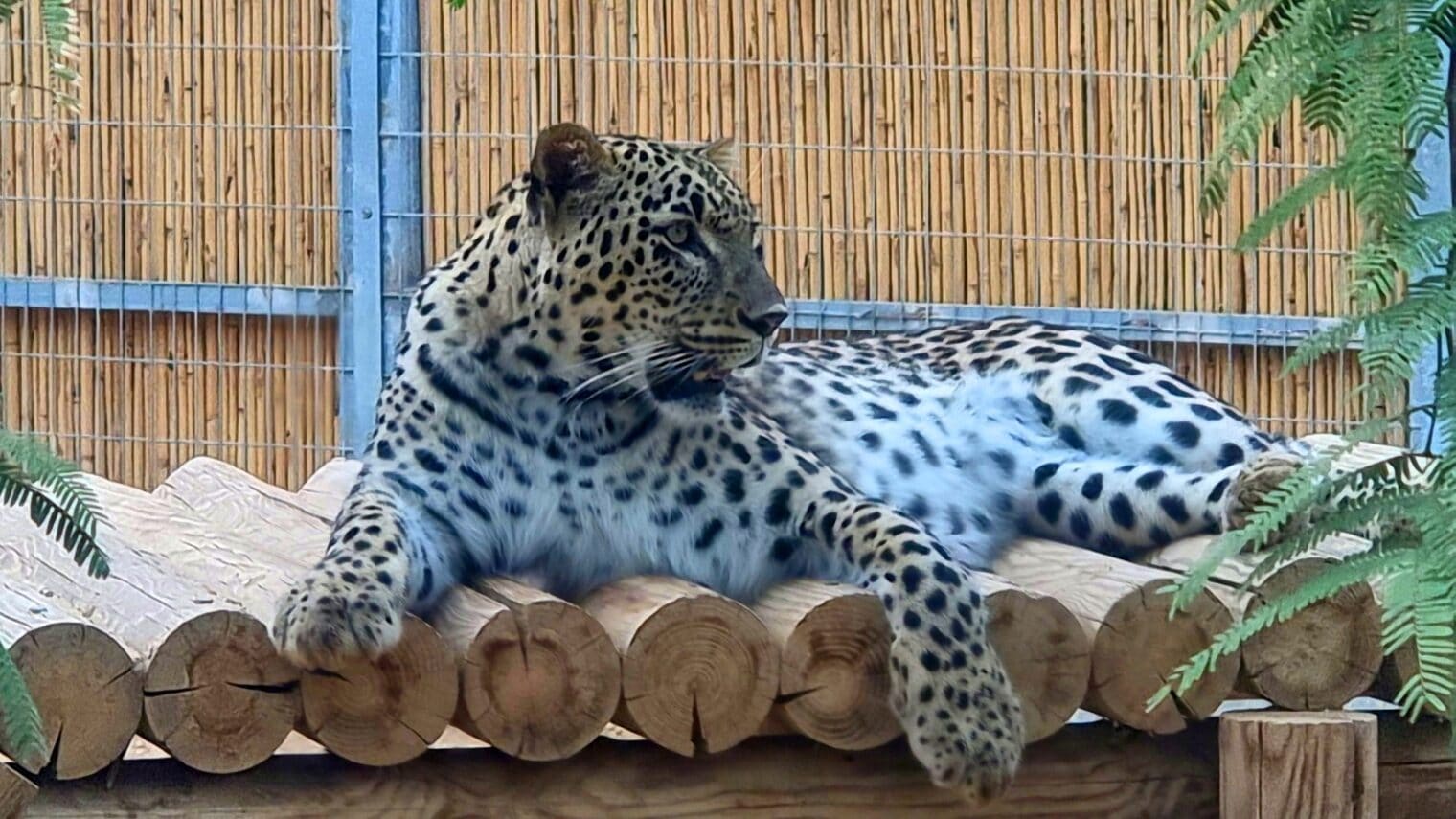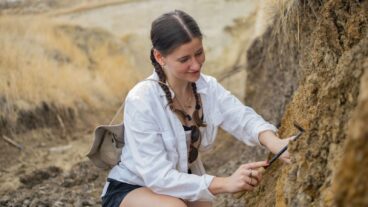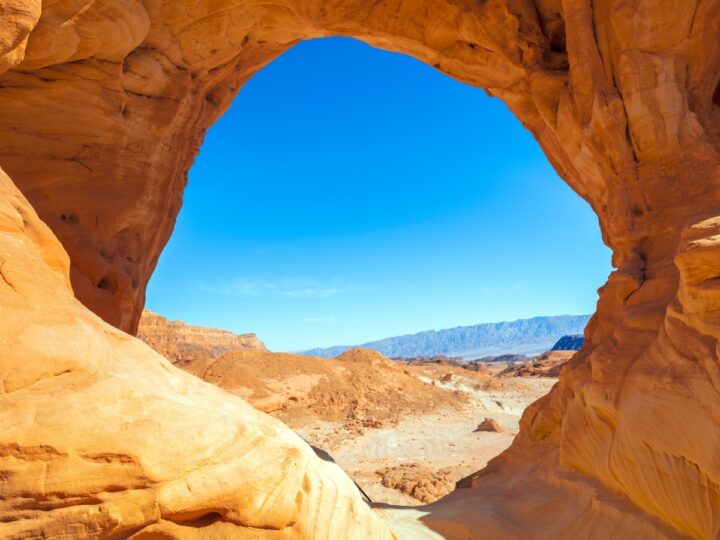The old Negev Zoo In Beersheva, just 25 miles from Gaza, closed in October 2022 to make way for the new, one-of-a-kind Midbarium Desert Animal Park.
After a year of preparing the 37-acre park and its innovative interactive visitor experiences, and transferring and acclimating 100 species of desert animals, the grand opening was scheduled for November 2023.
But then Hamas started a war on October 7. Now it’s unclear when the $60 million animal park will open.
Despite a severe staffing shortage and frequent air-raid sirens that frighten and endanger the creatures and their keepers, the animals need care and feeding – including animals evacuated to Midbarium from petting zoos in Gaza border communities.
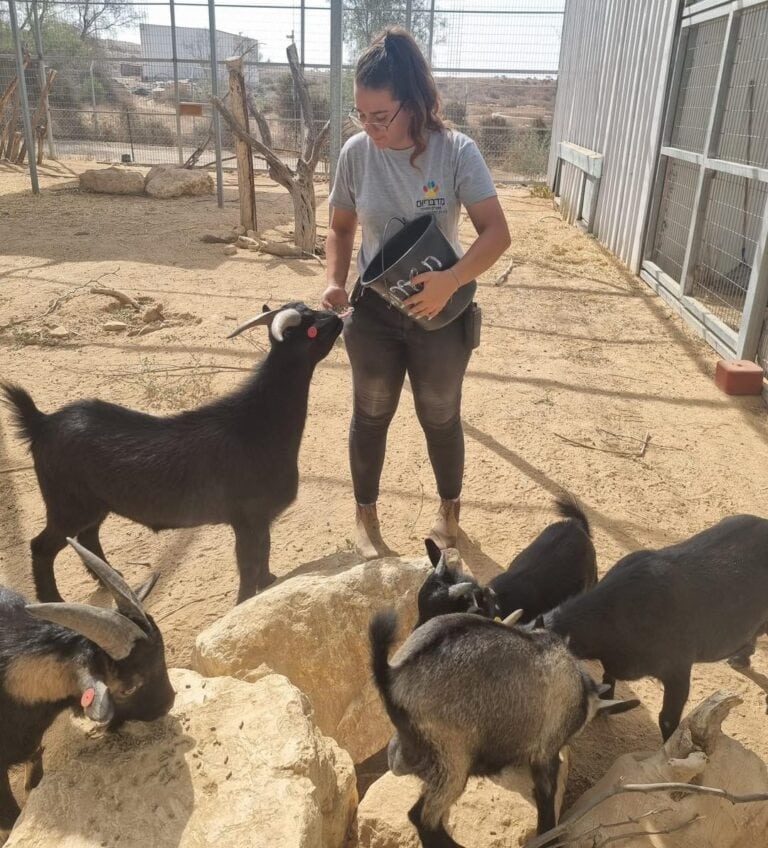
“It’s a risk to be here,” says zoologist Sefi Horesh, Midbarium’s director of education and science. “It’s difficult, but we’re managing.”
Skeleton crew
During the first week of war, the park couldn’t even get vegetables for the animals.
“Usually we receive donations, leftovers and tithes, but there was nothing available. The Ramat Gan Safari, one of our partners in the Israel Zoo Association, sent us a truckload of vegetables, and we also had to buy supermarket produce for our animals,” Horesh tells ISRAEL21c.
“Our baboons were in the Negev Zoo for 15 years and they are aware of what the siren means. They look up to the sky and a lot of them run to their inside enclosure. They learned that it’s safer inside.”
“We are doing our best to keep food and veterinary care going. We cannot do the training and enrichment that we normally do to keep the animals physically and mentally stimulated, because we are very low on manpower.”
Some employees were called up for reserve duty or have spouses in reserve duty and have to stay home with their children. Others fled Beersheva for safer parts of Israel.
Volunteers, including eight in the National Service program, have been told not to come because of the danger. Ordinarily, the park depends on these volunteers to perform essential daily tasks. The remaining crew is working 12-hour days, seven days a week.
“The main issue is the actual threat here in Beersheva, because we are on the western edge of the city, pretty close to Gaza, and we have rocket fire almost every day,” says Horesh.
“We also have shrapnel from Iron Dome missile interceptions falling on our zoo. I have some here in my office.”
Because the keepers work in open areas, when a red alert sounds they cannot get to a bomb shelter within the recommended 45 seconds. Instead, they must lie on the ground and cover their heads.
Scary noises
“The noise of alarms and booms stresses the animals a lot, especially those that have not been living in Beersheva for long,” says Horesh.
“Our baboons were in the Negev Zoo for 15 years and they are aware of what the siren means. They look up to the sky and a lot of them run to their inside enclosure. They learned that it’s safer inside.”
Likewise, the chimpanzees in the Jerusalem Biblical Zoo know that an air-raid siren means they should head to their indoor space, where the care team is waiting for them with bananas, a zoo spokesman tells ISRAEL21c.
Although there are many fewer alarms in Jerusalem than in the south, the zoo has regulation-compliant protected spaces available to many of the animals. Caretakers are training them to enter these spaces when they hear a siren.
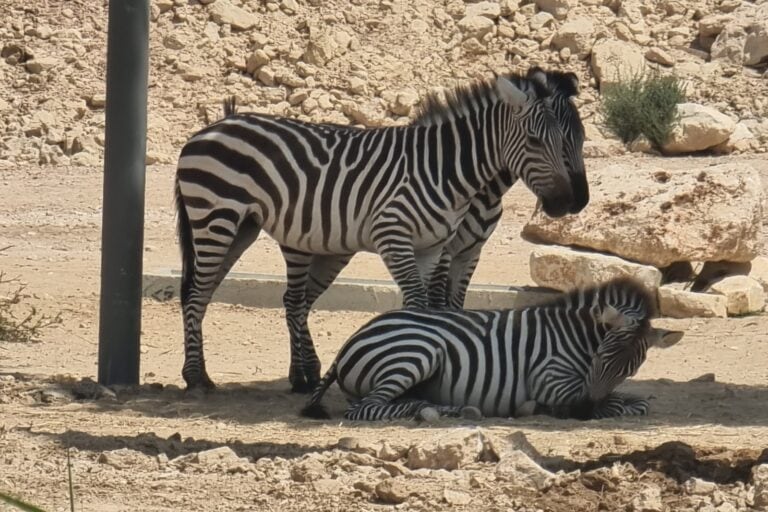
In general, says Horesh, the Midbarium staff is keeping most animals indoors for their protection these days.
“But it’s important for their wellbeing that they have regular access to the outdoors where they can get sunshine and roam around on the ground and not on concrete. So we do take them out but we try to minimize how many are outside at once in case there’s an alarm. Some days it’s the lions and cheetahs, other days the baboons and leopards.”
100 species
Under the auspices of the Kivunim Municipal Organization for Recreation and Culture in Beersheva, Midbarium was planned with the enthusiastic support of Mayor Rubik Danilovich.
The mayor was eager to transform the old zoo, which began in 1954 as a small petting zoo inside an elementary school.
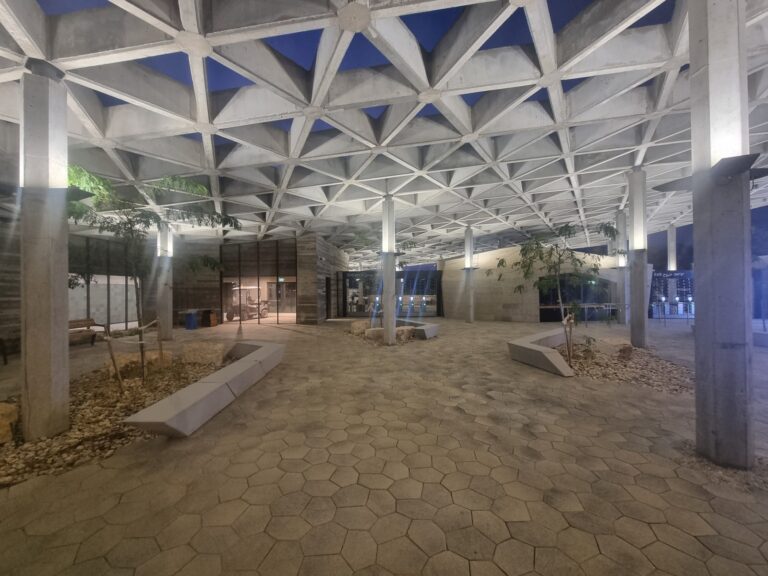
With $20 million in funding from the Jack, Joseph and Morton Mandel Foundation, and additional funds from the municipality and the national lottery, the new animal park – it’s no longer called a zoo – was constructed with four distinct habitats for desert-adapted species from Israel and Africa. (Midbar is Hebrew for “desert.”)
“We have about 100 species of animals divided into our habitats: Canyon, Desert Plains, Oasis and Savannah,” says Horesh.
The inhabitants came from the old zoo as well as from other Israeli and European zoos. It took time for the animals to get used to their new home, keepers, smells and sounds.
“Our wild boars were transferred just 500 meters from where they used to be, but one didn’t eat for a week just from being stressed. Several hippos were transferred from Ramat Gan Safari and one hippo kept hiding inside the water for a few weeks until he got comfortable enough to come out and explore.”
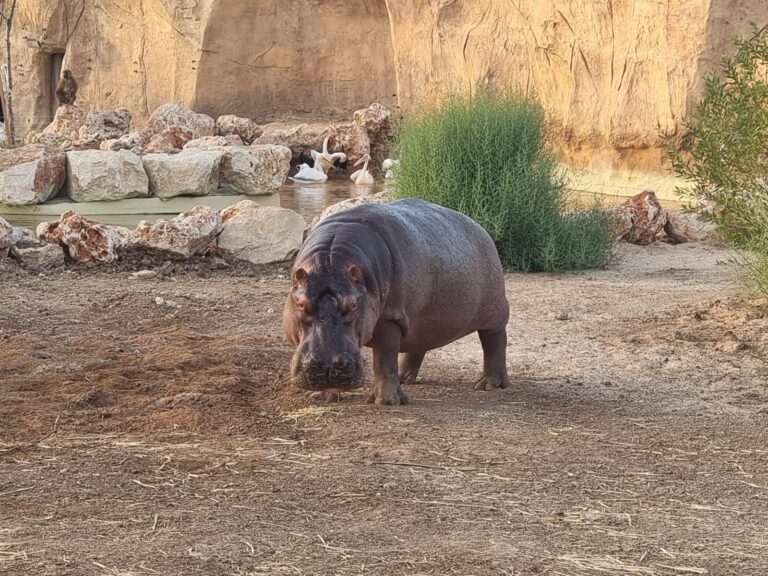
What awaits future visitors
This unique animal park and wildlife sanctuary was designed to accomplish the educational goals that most modern zoos have, while acknowledging that visitors want to be entertained and not lectured to.
“What they want and we want aren’t exactly the same, so we bridge this gap by giving them an amazing adventure,” says Horesh. “They’re learning without knowing they are learning.”
The park features 15 interactive experiences that allow visitors to “walk in the shoes” of the animal they’re observing to understand how they survive and thrive in desert habitats. Some examples: See Like a Raptor, Climb Like an Ibex, Sneak Up Like a Leopard, Slither Like a Snake, Romp Like a Monkey, Ambush Like a Crocodile and Navigate Like a Bat.
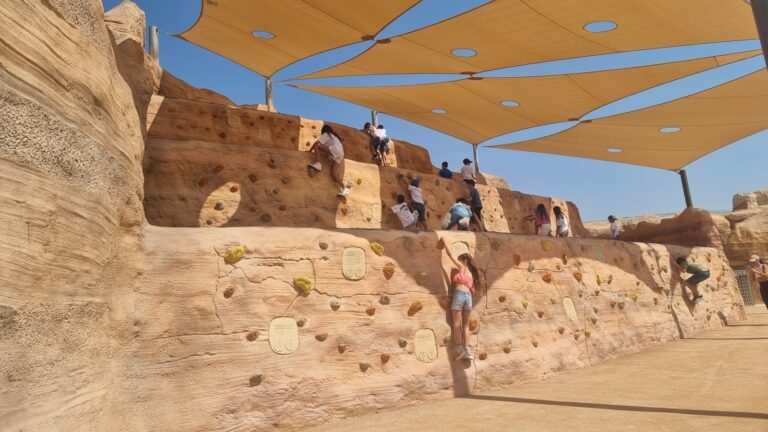
“Next to the leopards you have to stalk and ambush prey without setting off alarms. In the bat habitat you have to navigate a maze by echolocation,” Horesh explains.
The park also features playgrounds where kids can experience the conflicting survival strategies of desert animals in conditions of camouflage vs. boldness and day vs. night.
Until Midbarium can open its doors, the considerable operating costs (food, salaries, maintenance) are covered by the city and Kivunim.
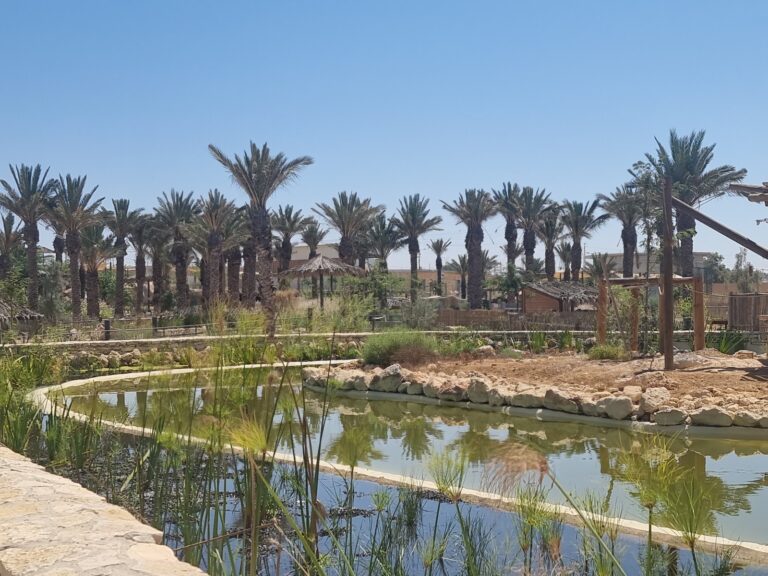
Both the Jerusalem Biblical Zoo and the Ramat Gan Safari are closed as well. The Haifa Educational Zoo is open only on Fridays and Saturdays for the time being.
The Jerusalem zoo is giving free tours to evacuees housed in local hotels and providing some of these families with animal-assisted therapy.
Animal therapy corner
Animal-assisted therapy also is available at Midbarium even now, Horesh says.
Housed in its own area of the park with a protected room, the therapy center opened on November 5 for a two-week pilot and probably will open to the public after that.
Using dogs, guinea pigs, rabbits and parrots, specially trained social workers treat all ages from five and up for communication and behavioral problems, trauma and post-trauma. One-on-one and group sessions are available.
In addition to the therapy pets, the park is also “babysitting” for chinchillas, rabbits, guinea pigs, snakes and miniature goats displaced from southern kibbutz petting zoos. It is starting conservation breeding programs with endangered animals such as a female cheetah sent over from Ireland.
The park is certainly full of activity, but not visitors just yet.
“We built a huge animal park that is supposed to be filled with people, with children, and we’re waiting to see that day,” says Horesh.
For more information, click here.




